Shared and distinct transcriptional programs underlie the hybrid nature of iNKT cells
- PMID: 23202270
- PMCID: PMC3764492
- DOI: 10.1038/ni.2490
Shared and distinct transcriptional programs underlie the hybrid nature of iNKT cells
Abstract
Invariant natural killer T cells (iNKT cells) are innate-like T lymphocytes that act as critical regulators of the immune response. To better characterize this population, we profiled gene expression in iNKT cells during ontogeny and in peripheral subsets as part of the Immunological Genome Project. High-resolution comparative transcriptional analyses defined developmental and subset-specific programs of gene expression by iNKT cells. In addition, we found that iNKT cells shared an extensive transcriptional program with NK cells, similar in magnitude to that shared with major histocompatibility complex (MHC)-restricted T cells. Notably, the program shared by NK cells and iNKT cells also operated constitutively in γδ T cells and in adaptive T cells after activation. Together our findings highlight a core effector program regulated distinctly in innate and adaptive lymphocytes.
Figures
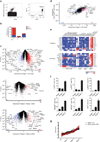

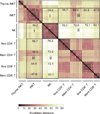
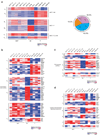

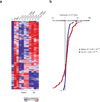
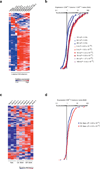
Similar articles
-
Transcriptome and chromatin landscape of iNKT cells are shaped by subset differentiation and antigen exposure.Nat Commun. 2021 Mar 4;12(1):1446. doi: 10.1038/s41467-021-21574-w. Nat Commun. 2021. PMID: 33664261 Free PMC article.
-
Thymic iNKT single cell analyses unmask the common developmental program of mouse innate T cells.Nat Commun. 2020 Dec 7;11(1):6238. doi: 10.1038/s41467-020-20073-8. Nat Commun. 2020. PMID: 33288744 Free PMC article.
-
Eomes transcription factor is required for the development and differentiation of invariant NKT cells.Commun Biol. 2019 Apr 29;2:150. doi: 10.1038/s42003-019-0389-3. eCollection 2019. Commun Biol. 2019. PMID: 31044175 Free PMC article.
-
Transcriptional and epigenetic regulation of innate-like T lymphocyte development.Curr Opin Immunol. 2018 Apr;51:39-45. doi: 10.1016/j.coi.2018.01.006. Epub 2018 Feb 14. Curr Opin Immunol. 2018. PMID: 29452898 Free PMC article. Review.
-
Stages versus subsets: Invariant Natural Killer T cell lineage differentiation.Cytokine. 2015 Apr;72(2):204-9. doi: 10.1016/j.cyto.2014.12.005. Epub 2015 Jan 31. Cytokine. 2015. PMID: 25648290 Free PMC article. Review.
Cited by
-
The transcription factor lymphoid enhancer factor 1 controls invariant natural killer T cell expansion and Th2-type effector differentiation.J Exp Med. 2015 May 4;212(5):793-807. doi: 10.1084/jem.20141849. Epub 2015 Apr 20. J Exp Med. 2015. PMID: 25897173 Free PMC article.
-
The impact of stress on the transcriptomic signature of iNKT1 cells.Biochem Biophys Rep. 2021 Oct 29;28:101163. doi: 10.1016/j.bbrep.2021.101163. eCollection 2021 Dec. Biochem Biophys Rep. 2021. PMID: 34765746 Free PMC article.
-
iNKT cell cytotoxic responses control T-lymphoma growth in vitro and in vivo.Cancer Immunol Res. 2014 Jan;2(1):59-69. doi: 10.1158/2326-6066.CIR-13-0104. Cancer Immunol Res. 2014. PMID: 24563871 Free PMC article.
-
A non-canonical function of Ezh2 preserves immune homeostasis.EMBO Rep. 2017 Apr;18(4):619-631. doi: 10.15252/embr.201643237. Epub 2017 Feb 21. EMBO Rep. 2017. PMID: 28223321 Free PMC article.
-
Transcriptome-based network analysis reveals a spectrum model of human macrophage activation.Immunity. 2014 Feb 20;40(2):274-88. doi: 10.1016/j.immuni.2014.01.006. Epub 2014 Feb 13. Immunity. 2014. PMID: 24530056 Free PMC article.
References
-
- Heng TS, Painter MW, Immunological Genome Project C. The Immunological Genome Project: networks of gene expression in immune cells. Nat Immunol. 2008;9:1091–1094. - PubMed
-
- Cohen NR, Garg S, Brenner MB. Antigen Presentation by CD1 Lipids, T Cells, and NKT Cells in Microbial Immunity. Adv Immunol. 2009;102:1–94. - PubMed
-
- Bendelac A, Savage PB, Teyton L. The biology of NKT cells. Annu Rev Immunol. 2007;25:297–336. - PubMed
-
- Godfrey DI, Stankovic S, Baxter AG. Raising the NKT cell family. Nat Immunol. 2010;11:197–206. - PubMed
Publication types
MeSH terms
Grants and funding
LinkOut - more resources
Full Text Sources
Other Literature Sources
Research Materials

